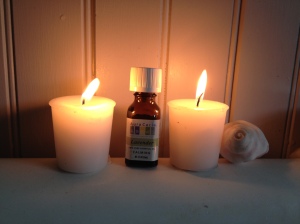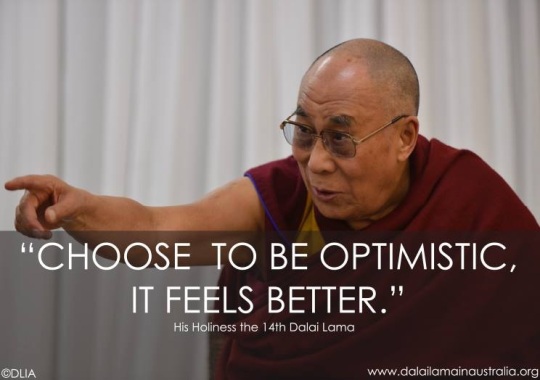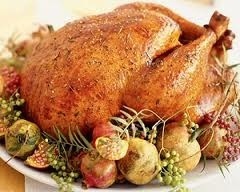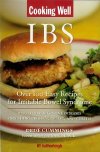 It is our hope that our readers have benefitted from the New Year, 3-month, Plan for Wellness. Here are seven painless and simple at-home acupuncture steps you can do to maintain good health and vitality. I recommend acupuncture and we had a wonderful guest blog post a few months ago that a lot of our readers thanked us for.
It is our hope that our readers have benefitted from the New Year, 3-month, Plan for Wellness. Here are seven painless and simple at-home acupuncture steps you can do to maintain good health and vitality. I recommend acupuncture and we had a wonderful guest blog post a few months ago that a lot of our readers thanked us for.
My naturopath also has me on a total “detox” regimen that includes castor oil packs, meditation (I use Rodney Yee’s “AM Yoga” DVD, or try Jon Kabat-Zinn’s wonderful collection of relaxation CDs), skin “sloughing” before shower (which entails roughing up your skin with a loofah sponge from your extremities toward your heart and encourages new cell growth), drinking plenty of water, regular exercise and daily yoga, counseling with a social worker or psychotherapist, weekly (free) REIKI and monthly massage visits, acupuncture sessions monthly, and physical therapy with integrative manual therapy-healing. A good attitude also helps. I regularly repeat to myself positive messages like:
“Don’t let this disease rule your life and get you down, but when you need to, ‘Ask for Help!’”
This simple YouTube mindfulness video by Jon Kabat-Zinn is wonderful, and Dr. Kabat-Zinn was one of the first to bring mindfulness into medicine!
The suggestions I receive from my naturopath are an attempt to enhance my body’s natural elimination processes through the digestive system, kidneys, skin, liver, and lungs. All are essential to help me optimize elimination with minimal aggravation while also undergoing specific treatment suggestions with my gastroenterologist. I have found this support team and naturopathic/acupuncture treatment to be extremely effective as an aid that can dramatically lessen the physical effects of inflammatory bowel disease.
These seven relaxation techniques are really easy to do at home. I do them before my shower daily! Foot massages are also very beneficial, which I do before bed with some moisturizer (I add a bit of organic apricot or sesame oil to the Pure Essentials moisturizer to thicken it up, and I also put cotton socks over my feet if calluses are bad), as well as candle-lit hot baths with lavender oil drops in the water.
- Brush your gums and tongue. Spend at least 5 minutes each time you brush (longer is even better). Set a timer because 5 minutes may seem like a very long time at first. The acupuncture points along the gums match with the entire body system, as does the tongue.
- Brush your scalp. Remember when moms insisted that we always brush our hair for 50 strokes? Turns out, there are hundreds of acupuncture points on the scalp itself. For a quick session, massage the governing vessel 20. This point is located at the very top of the head, the point of 100 meeting points, which enables you to access several channels at once. Spend time massaging your scalp with your fingernails and even while you shampoo.
- Push back your cuticles on your fingers and toes. Just the act of pushing back your cuticles stimulates acupuncture points that go directly to every muscle and tendon in the body, bringing on relaxation. Need to keep a small child quiet at an event? This works like a charm. Plus you can trace every finger front and back as well.
- Loofah your body. This is a hard sponge that softens with use. Loofah plants can be grown, and are much softer than those found at most department stores. (Note: when purchasing a loofah, be sure it says ‘loofah’ on the package.) Use the loofah wherever there is skin. There are thousands of acupuncture points all over the body. If you find a sore or itchy spot, spend extra time there. It is likely that it is an acupuncture point that needs stimulation. Electricity is accumulating there and stimulation via massaging or using a loofah disperses this accumulation. Before showering, use the loofah sponge to aggressively rub from the extremities toward the head, beginning with the arms, then working up from the feet. After you rub all the dead cells off your body, an invigorating shower further energizes you and allows for the stimulation of new cell growth.
- Moisten your nasal membranes. When you splash water on your face, keep water on your little fingers. Put your little fingers inside your nose and moisten all around. You do not need to sniff water up into your sinuses. Moistening your nasal membranes increases your chi (your body’s bio-electrical energy).
- Breathing exercises. Most of us are chest breathers, rather than abdominal breathers, so we tend to breathe shallow most of the day. On inspiration (breathing in), push your stomach out as far as you can. On expiration (breathing out), let your stomach fall back to neutral. This is very difficult to do at first without thinking about it. When you breathe with your abdomen it forces the diaphragm to drop and thus increases your lung capacity. This is why singers practice breathing so that they are able to sustain notes much longer. Breathing leads to more oxygen, more chi and more energy.
- Massage your face, hands, feet, and ears. You can do this yourself, but it is more relaxing and fun if done by someone else. These areas also treat the entire body individually.
(Grateful to Patricia S. Wesley, D.C. for her support)
Daily massage and stimulation will increase blood flow, help improve the effectiveness of your current therapies, improve mood, decrease inflammation, and promote healing.
Remember to think positive, and here is a wonderful quote and photo from the XIV Dalai Lama.
We like to hear from our readers, and thanks for helping spread the word about our book and recommendations!
—Dede, a Crohn’s disease/ulcerative colitis patient perspective—post surgical removal of ileum, large segment of Sigmoid colon, and fistula/granuloma mass—symptom-free for the past eight years, but still a Crohnie/uc-er by definition…
Since it is almost Thanksgiving, I thought I would write a post to wish everyone a happy, stress-free holiday, and try to help those with IBS, Crohn’s, and UC who may need some encouragement and advice.
We all know holidays can bring on the stress-inducing behaviors and hormones that cause internal signals to flare up in the body. When I was at the Mayo Clinic a few (short) months ago, I learned so much about controlling stress—make stress-reducing activities a priority, starting today, and leading up through the holiday season.
Your lifestyle structure is even more important here: daily exercise, gentle yoga, meditation, sleep, etc. Schedule appointments with professionals to help you lessen stress in your life: a talk therapist, acupuncture, massage (gift cards are good holiday presents for those you love!), etc. Do what makes you feel good about yourself AND relax! (I went to the salon yesterday for hair color!)
Tryptophan is one of the 10 essential amino acids that the body uses to synthesize the proteins it needs. It’s well-known for its role in the production of nervous system messengers, especially those related to relaxation, restfulness, and sleep.
I am now aware why I love turkey so much—I sometimes even crave it. I always feel more relaxed after I eat turkey, and this may explain why….There are many researchers who study the way tryptophan manufactures serotonin, a neurotransmitter that is found—guess where?—in the intestinal tract. Just about 90% of the body’s serotonin is actually found in the gut, so my gut tells me to eat it, and I am not even a biochemist!
Tryptophan has the ability to raise serotonin levels, too! Wow, who knew this? I love the fact that I can eat turkey and sample other holiday foods like nuts, seeds, bananas, pumpkins, squash, sweet potatoes, green beans with almonds, pearl onions (those sweet little ones, not the canned and creamed kind!) WITHOUT having a flare up. Also (again, who knew?!), Tryptophan also boosts the production of B3, and since I had a partial bowel resection in 2006, I need to keep track of my B vitamins (especially since my terminal ileum is completely gone, I have lost the capacity to fully absorb vitamin B12).
Everything I eat is sourced, and mostly bought from local farms. It is not that hard to do. For instance, our turkey is a Vermont-raised, free running turkey, and I picked it up yesterday from our local food coop. Potatoes are from here, also butternut squash, apples, pumpkins—are all from Vermont; cranberries are organic and from Cape Cod. I will be baking apples, too—delicious and easy. Some of us cannot eat nuts or cranberries, so avoid, but there is plenty to choose from!
Here are some tips: drink water before your meal to fill you up so you don’t overeat, take small portions, walk after the meal. If you have an ostomy, take extra supplies and a change of clothes to your hosts’ party. If you avoid sugar and alcohol, you will be less likely to flare up; also don’t try ANY food that is not on your list (remember the food journal from the book!).
On Wednesday/tomorrow, I will make some pies to drop off at our local Thanksgiving Day dinner for those less fortunate in our area—Don’t forget to do something to help someone else in need this week, and after. With all the holidays upon us, plan some special time each week to volunteer (soup kitchen, helping those who have been in a house fire, helping veterans, etc.). Thanksgiving was set as the fourth Thursday in November. This year, something amazing and historic has happened: After sundown on the second of Hanukkah’s eight days, we will also celebrate Thanksgiving. If you are Jewish, there is an even busier holiday!
I will post some recipes on my Facebook page! Be well, and breathe … A bit of dietary research unravels mysteries of cravings from this writer with uc/Crohn’s disease….Happy Thanksgiving & holidays everyone!






